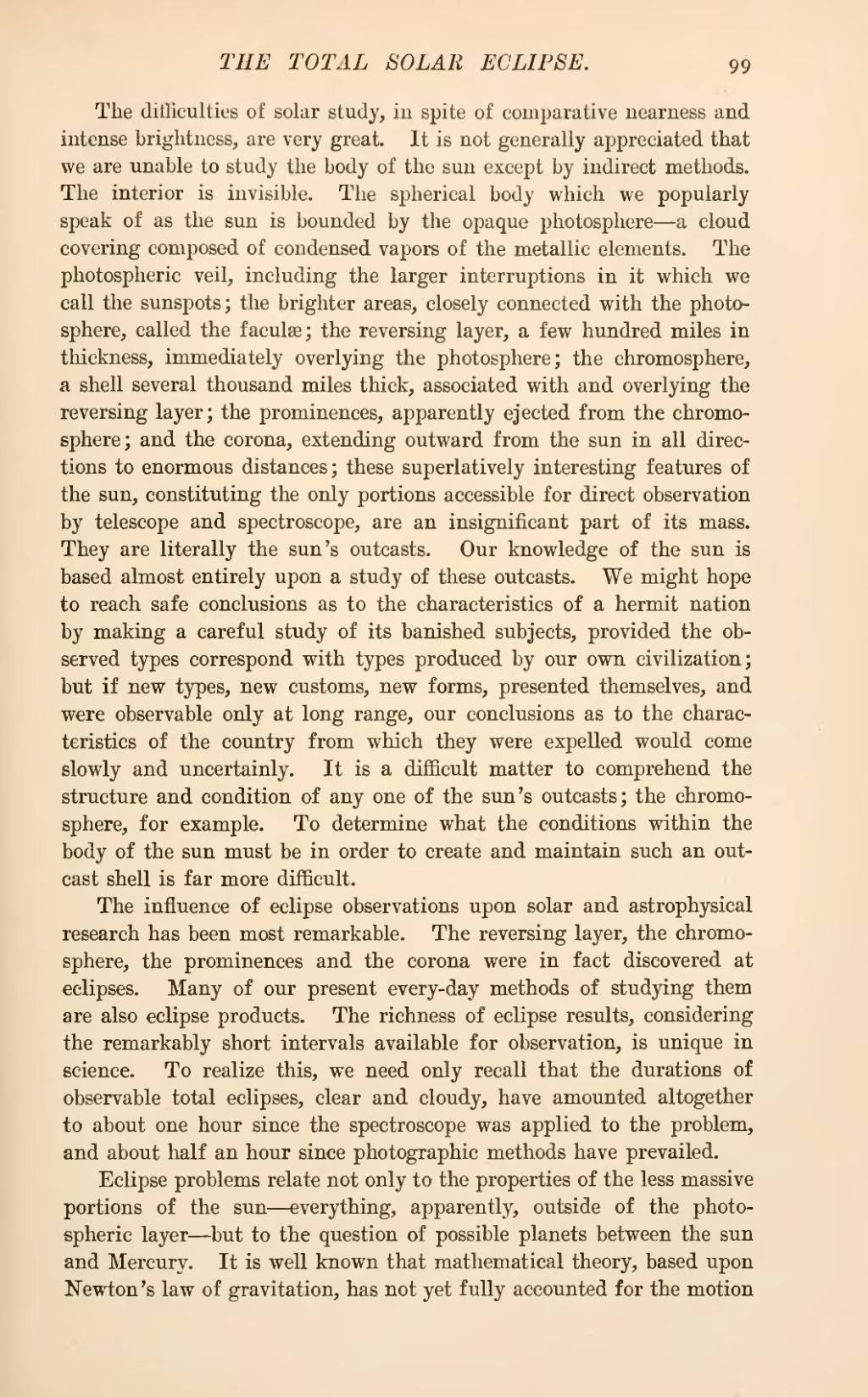The difficulties of solar study, in spite of comparative nearness and intense brightness, are very great. It is not generally appreciated that we are unable to study the body of the sun except by indirect methods. The interior is invisible. The spherical body which we popularly speak of as the sun is bounded by the opaque photosphere—a cloud covering composed of condensed vapors of the metallic elements. The photospheric veil, including the larger interruptions in it which we call the sunspots; the brighter areas, closely connected with the photosphere, called the faculæ; the reversing layer, a few hundred miles in thickness, immediately overlying the photosphere; the chromosphere, a shell several thousand miles thick, associated with and overlying the reversing layer; the prominences, apparently ejected from the chromosphere; and the corona, extending outward from the sun in all directions to enormous distances; these superlatively interesting features of the sun, constituting the only portions accessible for direct observation by telescope and spectroscope, are an insignificant part of its mass. They are literally the sun's outcasts. Our knowledge of the sun is based almost entirely upon a study of these outcasts. We might hope to reach safe conclusions as to the characteristics of a hermit nation by making a careful study of its banished subjects, provided the observed types correspond with types produced by our own civilization; but if new types, new customs, new forms, presented themselves, and were observable only at long range, our conclusions as to the characteristics of the country from which they were expelled would come slowly and uncertainly. It is a difficult matter to comprehend the structure and condition of any one of the sun's outcasts; the chromosphere, for example. To determine what the conditions within the body of the sun must be in order to create and maintain such an outcast shell is far more difficult.
The influence of eclipse observations upon solar and astrophysical research has been most remarkable. The reversing layer, the chromosphere, the prominences and the corona were in fact discovered at eclipses. Many of our present every-day methods of studying them are also eclipse products. The richness of eclipse results, considering the remarkably short intervals available for observation, is unique in science. To realize this, we need only recall that the durations of observable total eclipses, clear and cloudy, have amounted altogether to about one hour since the spectroscope was applied to the problem, and about half an hour since photographic methods have prevailed.
Eclipse problems relate not only to the properties of the less massive portions of the sun—everything, apparently, outside of the photospheric layer—but to the question of possible planets between the sun and Mercury. It is well known that mathematical theory, based upon Newton's law of gravitation, has not yet fully accounted for the motion

